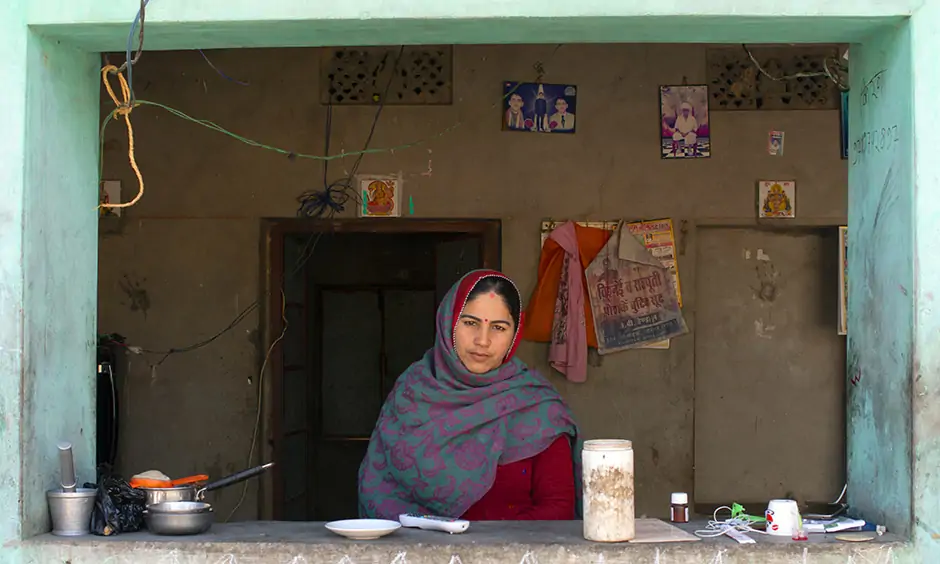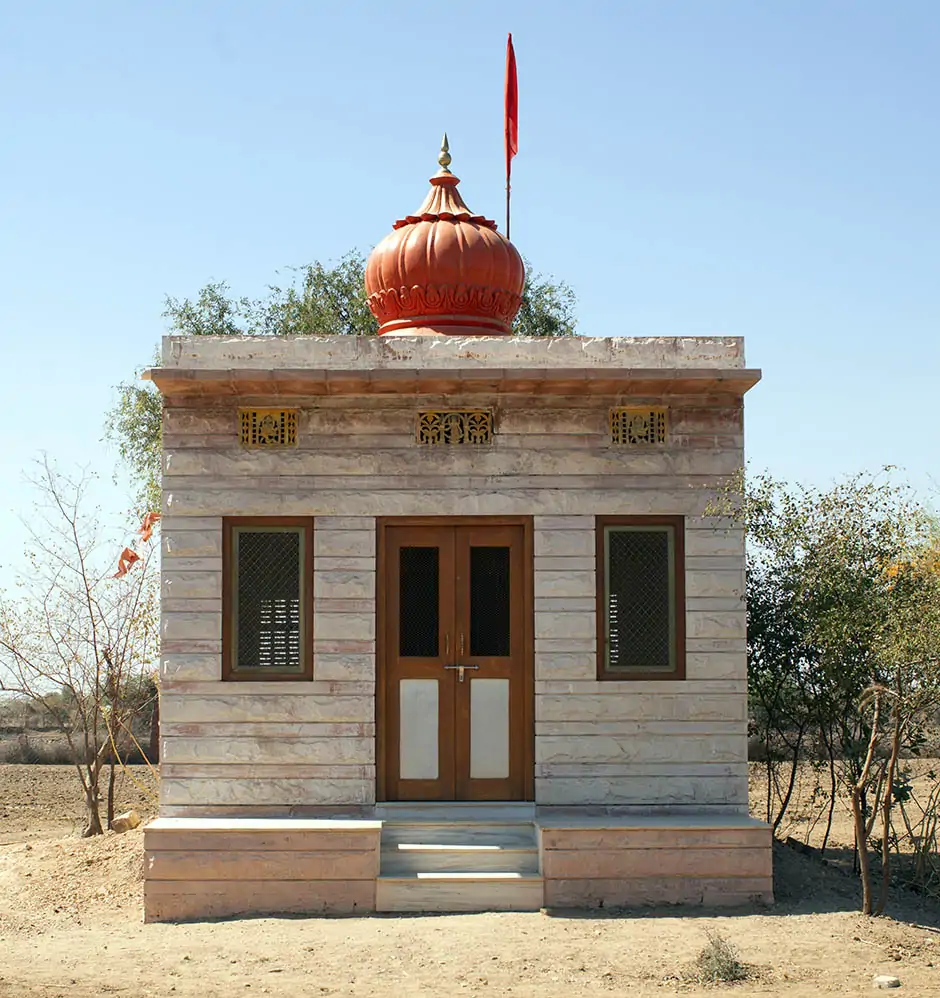South Asia Travel Narrative Story: The Bishnoi Religious Sect, India
Story and photography by Ray Waddington.
Click/tap an image to begin a captioned slideshow (best viewed on a modern, wide-gamut display) and stock licensing details.
Sometimes mistaken for an ethnolinguistic (tribal) minority or a caste, the Bishnoi are in fact a religious sect. Anyone can follow this religion, which was established five hundred years ago by Jambheshwar and has commonalities with Hinduism. In practice, over half a million people in India follow Jambheshwar's twenty-nine life principles today (Bishnoi means twenty-nine.) They are located mostly in western and central India. I spent a day visiting a few Bishnoi communities near Jodhpur, Rajasthan.
I arrived very early at the first community. At one house these two young girls, cousins, were eating breakfast before heading to school. It was a simple breakfast consisting only of grains. A vegetarian diet is one of the twenty-nine life principles.
The girls soon left to walk to school (about a kilometer away). I remained awhile and talked to the adults — the parents and a grandmother of the girls. Like all Bishnoi, they are farmers and herders. Of course, the livestock are used only to provide milk. But another religious principle bans selling their livestock lest they then be slaughtered and eaten. This was February so there was no work to be done in the fields. The land here is very arid and the climate very dry outside the summer monsoon season. All non-dairy food has been stockpiled since the previous harvest.
I then made my way to the village school. Like the breakfast it was very simple with just two classrooms. When I arrived I was surprised at first to see only a group of girls assembled — there were no boys yet. Then I observed more closely. One girl was sweeping the area outside the classrooms while another girl had been tasked with drawing the day's water supply from the school well. She then poured it though a mesh to filter it. This is also in line with another Bishnoi principle: all water (and milk) should be filtered before consumption.
Even though the Bishnoi are in principle an egalitarian society, the reality is that the girls always arrive sooner to perform these preparatory tasks before the lessons can begin. This is a reflection of broader Indian society in which women and girls are, in general, subservient to men and boys. It also highlights one of the many ways in which outside influences are creeping into Bishnoi culture.
When the girls had finished these preparatory tasks there were still no boys in sight. It was already past the official start of lesson time, but the girls just sat patiently. They knew the teacher would not begin with no boys there. I also waited, but after about twenty minutes decided it was time to move on to the next community.
There were only two people at the next house — an elderly woman and her infant granddaughter. Both parents had regular jobs in Jodhpur. The child had intriguing large, dark eyes. I knew immediately that I wanted to photograph her (with her grandmother's permission), but she was very shy. Most of the Bishnoi communities in this area are visited to some extent by outsiders, but this girl was too young to be used to that. So I broke the ice by goofing around and laughing a lot. My laughter was contagious to her and she soon became relaxed and no longer shy. I took quite a few photos while sharing tea with her grandmother and my guide. I thought I'd taken all the photos I wanted so I started to say my good-byes while packing away my camera. I waived a good-bye to her and she then started acting — no doubt aware that this would be the last time she would receive so much attention for a while. She waived back to me frantically and repeatedly as though she was trying to prevent me from leaving! Finally her grandmother picked her up and this was the last photo I took of her.
After my final good-bye the guide suggested we drive to a few more houses. At many of them there was nobody at home. But when there was I got a deep insight into what life is like in these communities. As in many parts of India (and the world), survival is planned around seasonal cycles. While the summer monsoon is the most important, more minor climatic variation results in how valuable livestock is. It influences not only cattle births but also cattle defecation. That may sound strange, but dung is used both in construction and as fuel. Given that, it was not surprising to see dung being stockpiled alongside food.
Inside the houses were, invariably, one or more women dressed in ornate, traditional clothing.
Next we moved on to a community where everyone was at home. This was a working community where everyone was involved with pottery. Here again there was evidence of gender discrimination. As far as I could see only the men were actually making the pottery. The women were either assisting them in some way or were involved in selling the end product.
After leaving the pottery community the guide got a little lost. I was surprised at that because we were heading for the only Bishnoi temple in the area. I would have expected the guide to be familiar with such an important landmark. He started asking locals for directions. One woman, who was carrying a baby, appeared to be giving correct directions. But further along the road he asked two more women to whom we ended up giving a ride to their destination.
It was only a dozen or so more kilometers to the temple. After arriving we first stopped at the home of the family who maintained it and shared a drink of tea with them. (I'm more of a coffee drinker, but many times in rural India I've received very strange looks when asking for coffee!) I learned a lot more about the details of the Bishnoi religion than I had previously during the day. In some ways it is less a religion and more common sense (like most aspects of most religions).
Photography copyright © 1999 -
2025,
Ray Waddington. All rights reserved.
Text copyright © 1999 -
2025,
The Peoples of the World Foundation. All rights reserved.
Waddington, R., (2019) The Bishnoi Religious Sect, India. The Peoples of the World Foundation. Retrieved
November 15, 2025,
from The Peoples of the World Foundation.
<https://www.peoplesoftheworld.org/travelStory.jsp?travelStory=bishnoi>
If you enjoyed reading this travel story, please consider buying us a coffee to help us cover the cost of hosting our web site. Please click on the link or scan the QR code. Thanks!













